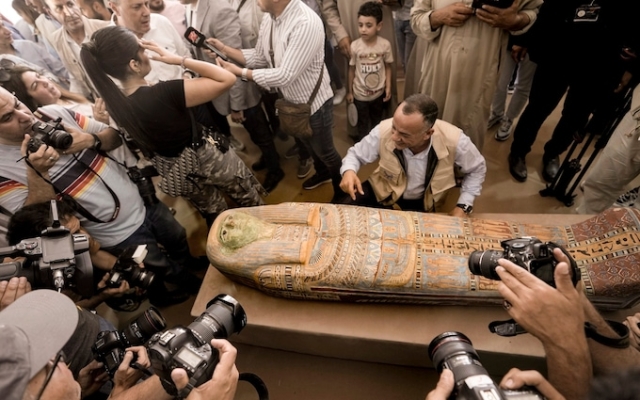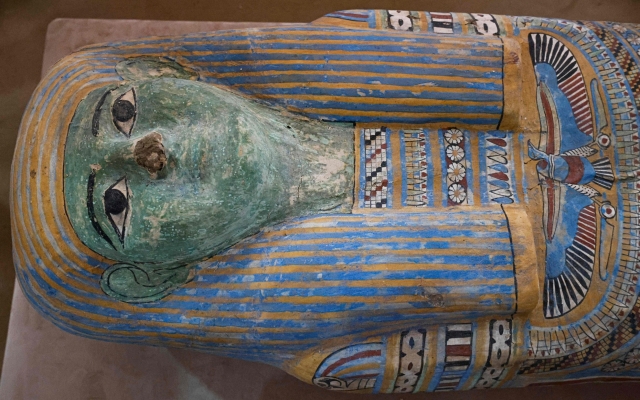 Mostafa Waziri, Secretary General of the Supreme Council of Antiquities, displays a recently discovered ancient wooden sarcophagus. Credit: Amr Nabil/AP
Mostafa Waziri, Secretary General of the Supreme Council of Antiquities, displays a recently discovered ancient wooden sarcophagus. Credit: Amr Nabil/AP
Egyptian archaeologists have unearthed the «largest and most complete» human and animal mummification workshops ever unearthed at a site near Cairo.
A workshop dating back to the 30th dynasty and early Ptolemaic era (4th century BC) was found next to the Step Pyramid of Djoser, the oldest stone pyramid.
"Two stone beds. for embalming a person were found in a number of rooms. The beds were about two meters long and one meter wide. They were built of stone blocks and covered with a layer of mortar, which descended to the gutter. said Mostafa Waziri, general secretary of Egypt's High Council of Antiquities.
"The mummification beds were used to prepare the body by extracting human organs, which were placed in discovered canopies"
 A color painting depicting sacrifices in a newly discovered tomb. Photo: AP/Amr Nabil
A color painting depicting sacrifices in a newly discovered tomb. Photo: AP/Amr Nabil
The human mummification workshop is a rectangular mud-brick building divided into several parts from the inside. rooms with two embalming beds. Other mummification materials discovered included linen rolls, canopies, and tools used to extract body organs.
The mummification workshop for sacred animals is a rectangular building made of clay, brick and stone, divided into rooms and halls. It contains animal burials and bronze tools for animal mummification, as well as five limestone beds sunk into the floor.
 The sarcophagus is open for visitors to the necropolis of Saqqara. Photo: AFP/KHALED DESOUKI
The sarcophagus is open for visitors to the necropolis of Saqqara. Photo: AFP/KHALED DESOUKI
The finds also include two small tombs, 4400 and 3400 years old, carved into the rock. It is believed that they belonged to high-ranking officials and priests.
On the walls of one of the tombs, inscriptions about agriculture, hunting and other occupations were found, as well as a large collection of artifacts, which included beautiful intact wooden and stone statues and funerary items .
Mummification in ancient Egypt was a complex and time-consuming procedure that could take up to 70 days. The first step was to extract the internal organs, which were then placed in stone or ceramic vessels. Then the body was washed, covered with natron, a natural absorbent carbonate mineral, and left to dry for 40 days.
After drying, the body was wrapped with linen bandages, on which spells and images of Egyptian gods were written. Then the mummy was placed in a coffin and buried.
The Bubasteion Necropolis, one of the main burial sites in ancient Egypt, was located on the west bank of the Nile opposite Memphis. It was dedicated to Bastet, the patron goddess of cats.
























































Свежие комментарии